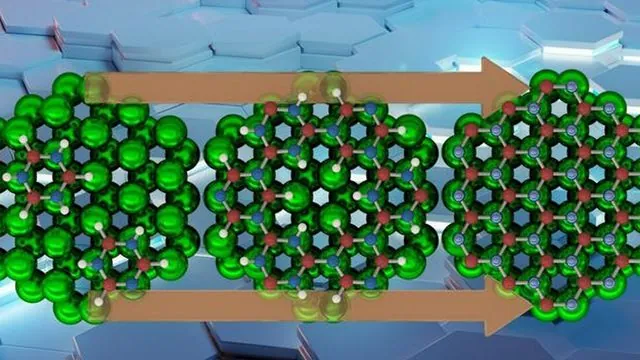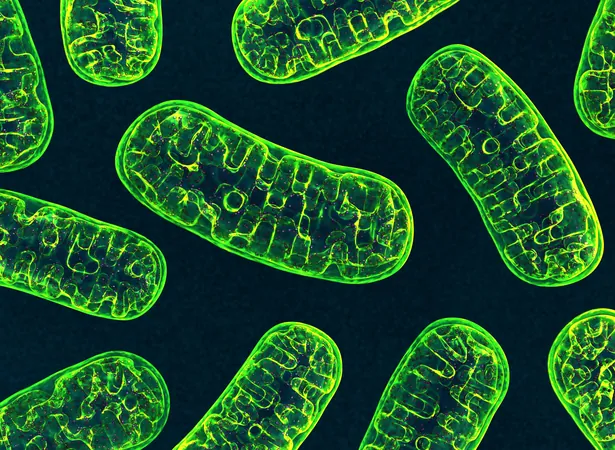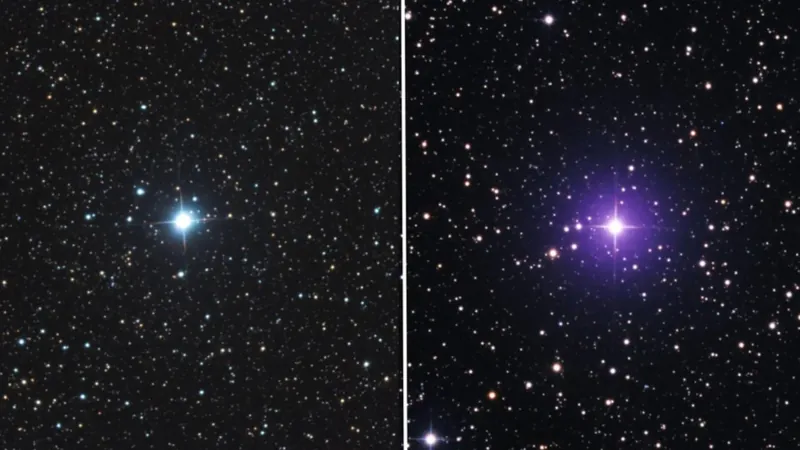
"White Graphene" Breakthrough Could Revolutionize Energy and Technology!
2025-01-09
Author: Daniel
Introduction
In an astonishing breakthrough, researchers at the University of Surrey have made significant strides in understanding the growth process of Hexagonal Boron Nitride (hBN), a remarkable two-dimensional material often referred to as "white graphene." This insightful research could revolutionize the fields of electronics, cleaner energy, and sustainable chemical manufacturing.
Properties of hBN
Hailed as a game-changer, hBN is only one atom thick and boasts extraordinary properties—it effectively blocks electrical currents, can endure extreme temperatures, and resists chemical degradation. These attributes not only make hBN an essential element in advanced electronic devices but also pave the way for the creation of faster and more efficient transistors and protect delicate microchips from damage.
Nanoporous hBN Development
What’s even more exciting is the recent development of nanoporous hBN. This new form features structured voids that enhance its capabilities for selective absorption, advanced catalysis, and increased functionality, thereby vastly expanding its applications in environmental technology. From filtering pollutants to enhancing hydrogen storage and serving as electrochemical catalysts for fuel cells, nanoporous hBN is set to play a significant role in the transition towards cleaner energy sources.
Research Insights
Dr. Marco Sacchi, the lead author of the study and an Associate Professor at Surrey’s School of Chemistry and Chemical Engineering, emphasizes the importance of their findings: “Our research sheds light on the atomic-scale processes that govern the formation of this remarkable material and its nanostructures. By understanding these mechanisms, we can engineer materials with unprecedented precision, optimizing their properties for revolutionary technologies.”
Collaboration and Methodology
The research team, collaborating with Graz University of Technology in Austria, utilized advanced theories and models to delve into the nanostructuring processes associated with hBN. So far, they have mapped the growth of hBN from borazine precursors, exploring essential molecular processes such as diffusion, decomposition, adsorption, desorption, polymerization, and dehydrogenation. Their findings have led to the development of a model that allows for the material’s growth at varying temperatures.
Conclusions
Dr. Anton Tamtögl, a lead researcher at TU Graz, states, “Previous studies have neither considered all these intermediates nor such a large parameter space (temperature and particle density). We believe our findings will effectively guide the chemical vapour deposition growth of hBN on various metallic substrates, as well as the synthesis of nanoporous or functionalised structures.”
Outlook
As this groundbreaking research unfolds, the implications for next-generation technology and cleaner energy solutions seem limitless. Brace yourselves, as “white graphene” may soon emerge as a cornerstone of sustainable advancements in multiple industries! Stay tuned for updates on how this amazing innovation is set to transform the material sciences landscape and improve our everyday lives!






 Brasil (PT)
Brasil (PT)
 Canada (EN)
Canada (EN)
 Chile (ES)
Chile (ES)
 Česko (CS)
Česko (CS)
 대한민국 (KO)
대한민국 (KO)
 España (ES)
España (ES)
 France (FR)
France (FR)
 Hong Kong (EN)
Hong Kong (EN)
 Italia (IT)
Italia (IT)
 日本 (JA)
日本 (JA)
 Magyarország (HU)
Magyarország (HU)
 Norge (NO)
Norge (NO)
 Polska (PL)
Polska (PL)
 Schweiz (DE)
Schweiz (DE)
 Singapore (EN)
Singapore (EN)
 Sverige (SV)
Sverige (SV)
 Suomi (FI)
Suomi (FI)
 Türkiye (TR)
Türkiye (TR)
 الإمارات العربية المتحدة (AR)
الإمارات العربية المتحدة (AR)